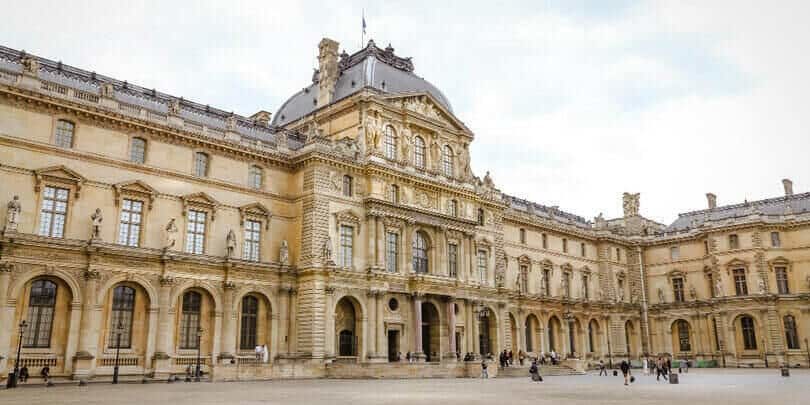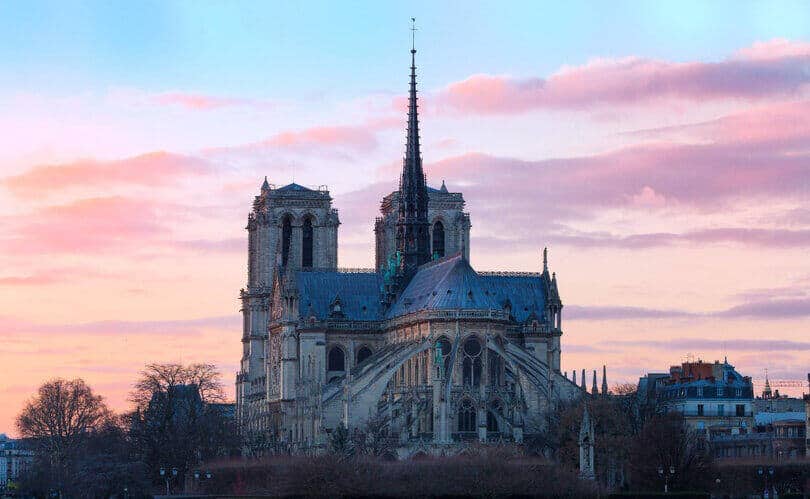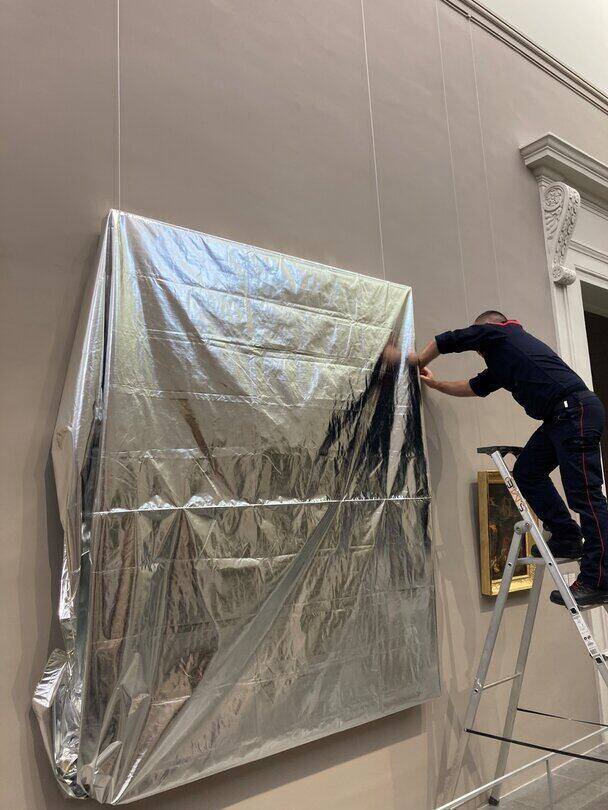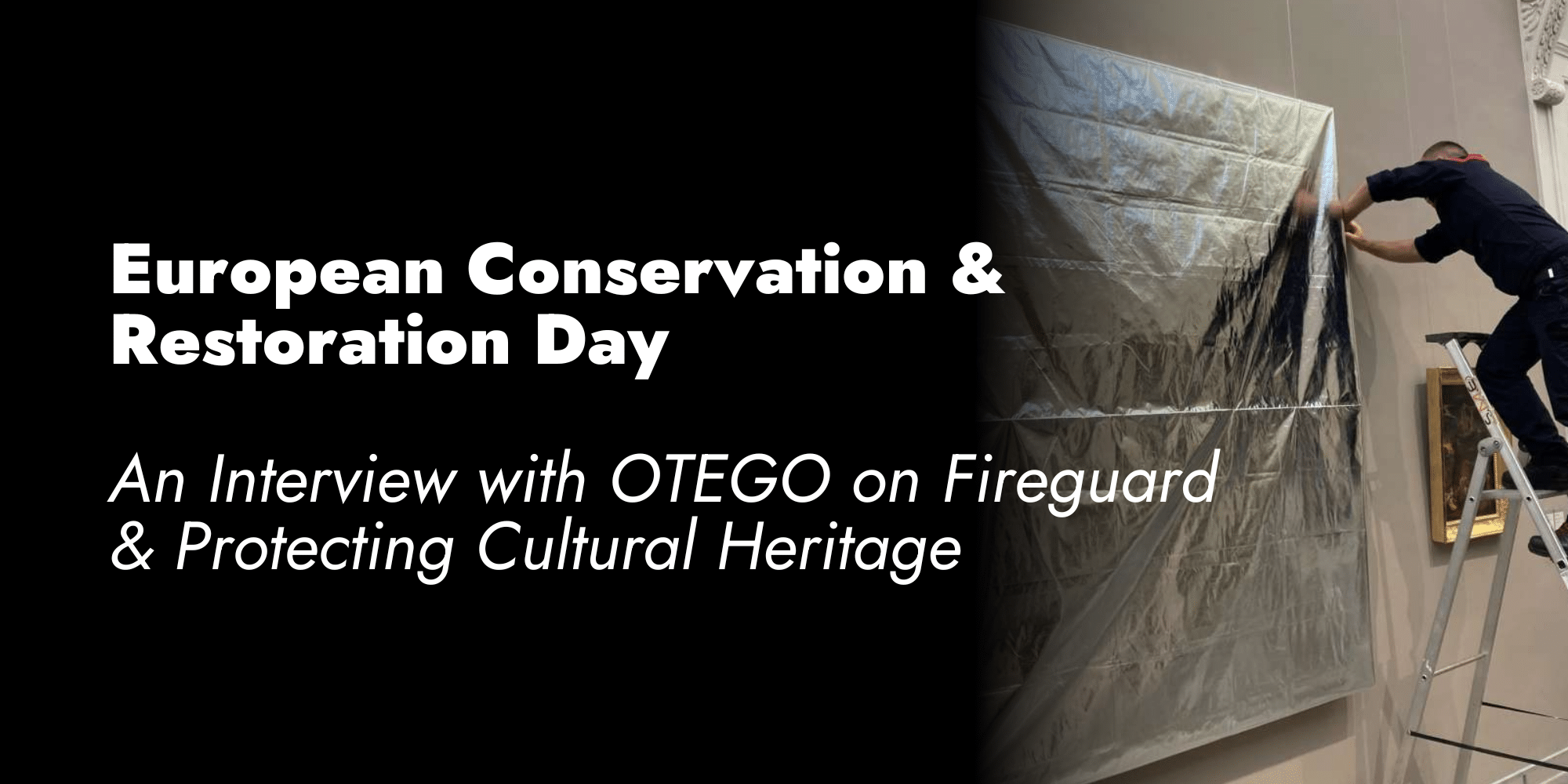In recent years, Europe has faced a rising number of emergencies threatening its cultural heritage,…

Changes In Cultural Heritage Preventive Conservation
In 2018 in France, only around 17% of museums had an Emergency Plan, today it’s around 35% and growing.
The tragic fire that consumed the Notre Dame Cathedral in April 2019 was a turning point for the practice of preventive conservation of our world’s greatest cultural treasures. In the wake of the fire, many different stakeholders involved in cultural heritage preventive conservation realised the importance of working together to protect these irreplaceable pieces of history.
This blog post will explore some of the key changes that have taken place in the past years and consider what still needs to be done to improve emergency preparedness at museums and cathedrals around the world.
The Notre Dame Cathedral Fire – The Catalyst for Preventive Conservation

Fig. 1. The Notre Dame Cathedral
(Source: Freepik)
The inferno that devoured the Notre Dame Cathedral caused unimaginable damage to this historic building, but also served as a catalyst for change in the field of preventive conservation. In the aftermath of the fire, it became apparent that there was a real need for different stakeholders involved in cultural heritage preventive conservation to work together more closely.
Before the fire, most museums and cathedrals had little to no emergency preparedness plan in place in case of a disaster. In the days and weeks after the blaze, it became apparent that many museums and cathedrals did not have adequate plans in place to deal with such an event. The risk of fire is higher in these facilities because of the ageing organic materials that make up their structure. This was compounded by the fact that there was a distinct lack of coordination between different stakeholders involved in cultural heritage prevention and response.
Thanks to the Notre Dame tragedy, awareness has been raised on the importance of having a comprehensive preventive conservation plan. As a result of these shortcomings, it is now widely accepted that all museums and cathedrals must have comprehensive emergency plans in place, which are regularly updated and shared with all relevant parties.
Stakeholders in Improving the Cultural Heritage Preventive Conservation

Fig. 2. Stakeholders are improving their preventive conservation measures
(Source: Freepik)
Many different stakeholders have stepped up to provide resources and assistance to help museums and cathedrals establish emergency preparedness plans. Here are the notable ones that offer help to cathedrals, museums, and other heritage sites in creating conservation plans:
- Centre de recherche et restauration des Musées de France (C2RMF)
The Ministry of Culture already laid out guidelines for the safeguarding of cultural property, an operational document in an emergency situation. This plan was given to establishments and services under the Ministry of Culture and to the regional directorates of cultural affairs. The goal was to promote its application in historical monuments, museum collections, and archive services in their territories.
This backup plan is a comprehensive tool that will guide and facilitate decision-making by both the commander of emergency operations, the collection managers from within the organisation managing cultural heritage and similar assets, and other institutional administrators. The plan is a crucial component of any emergency management system. It allows for rapid decision-making and implementation in the event that something goes wrong.
- Blue Shield International Committee
Another key stakeholder is Heritage emergency training programs such as those offered by Blue Shield International organisation. They offer training courses specifically designed for museum and cathedral staff on how to respond to emergencies such as fires, floods, and earthquakes.
The Blue Shield Committee is responsible for the preventive conservation of cultural heritage in France. This includes ensuring that heritage sites are protected from the effects of armed conflict, as well as from natural and man-made disasters. The Committee works with a variety of partners, including the French government, local authorities, and NGOs, to ensure that cultural heritage is properly safeguarded. In recent years, the Committee has also been active in promoting preventive conservation measures at a European level.
- Direction Régionale des Affaires Culturelles (DRAC)
The C2RMF and DRAC offered a series of practical workshops in 2019/2020 to help French museums and heritage places draw up their plans for safeguarding cultural property. This is an important opportunity, as many still lack clear guidelines on how to best protect their valuable natural history collections from damage or loss.
The workshops were led by the C2RMF team and various professionals who intervened throughout the training, including the French Blue Shield Committee, insurance brokers, specialised carriers, certified restaurateurs, and the SDIS among others.
- The French Government’s “Plan Cathédrales”
The “cathedral plan” is an €80 million project created by the French Government that aims to restore and preserve some of the most important historic monuments in the country. These monuments are not only significant to French history, but also to the world’s cultural heritage. The goal of the project is to protect these irreplaceable pieces of history for future generations.
International Initiatives on Cultural Preservation
The Notre Dame fire was a tragedy that will never be forgotten. It ignited several initiatives not only in France where the fire happened but also in other regions spanning the entire European continent.
ProCultHer to PROCULTHER-NET
PROCULTHER-NET is an initiative by the European Union to consolidate a thematic community focused on the preventive conservation of cultural heritage at risk of disaster. The initiative aims to foster multidisciplinary and risk-based exchange practices to support and complement the efforts made by the European Union in the field of civil protection.
Preventive conservation is a key aspect of protecting cultural heritage and the entire collection of historical assets from disasters. It involves taking measures to reduce the risks posed by hazards such as fire, floods, earthquakes, etc. Preventive conservation measures can include strengthening buildings, installing early warning systems, developing evacuation plans, and raising awareness among the public about the importance of protecting cultural heritage.
PROCULTHER-NET provides a platform for experts from various disciplines to share scientific knowledge, best practices, and proper procedures for preventive conservation. The initiative will also help to raise awareness about the importance of conservation treatment among the general public.
PROCULTHER-NET is an important step forward in promoting preventive conservation as a key tool in disaster risk management. By developing common preventive conservation approaches and sharing knowledge and expertise, the project will help to reduce the vulnerability of cultural heritage to natural and man-made disasters.
Loi Fédérale sur la Protection des Biens Culturels en Suisse (LPBC)
The LPBC is the Swiss law that provides the general legal framework for the protection of cultural property in the event of armed conflict. Based on the 1954 Convention for the Protection of Cultural Property in the Event of Armed Conflict, Switzerland undertook to respect and protect cultural property on its territory and on the territory of other State Parties. The LPBC and its implementing ordinance (OPBC) provide for precautionary measures in times of peace, as well as respect for Swiss and foreign cultural property during armed conflict.
International Centre for the Study of the Preservation and Restoration of Cultural Property (ICCROM)
The ICCROM is a specialised agency of UNESCO that works to protect cultural heritage through training, research, and documentation. After the Notre Dame fire, ICCROM released an updated version of its Emergency Preparedness, Response, and Recovery manual, which provides detailed guidance on developing and implementing an emergency plan.
How OTEGO Can Help

Fig. 3. The Otego Fireguard
The Notre Dame fire was a tragedy that will never be forgotten. But it also served as a wake-up call for the need to better protect our world’s cultural heritage. Thanks to the efforts of many different stakeholders, museums and cathedrals are now more prepared than ever before to face any emergency.
Preventive conservation is a constantly evolving field, and OTEGO is at the forefront of developments in this area. We offer a comprehensive range of products and services that can provide fire protection and help shield cultural heritage objects from damage and deterioration.
For preventive conservation, we have the Fireguard. It’s made of heat-resistant and flame-retardant components designed for fire protection. It can provide physical protection to objects, such as artwork and items of historical importance, against high relative humidity and extreme temperatures. The heat-resistant and flame-retardant Fireguard is suitable for use on a wide variety of materials, including paper, textile, metal, glass, and ceramic to make sure historical assets are maintained in best environmental conditions.
If you would like to find out more about how OTEGO can help you with the protection of artwork, please contact us. We would be happy to discuss your specific needs and provide you with a tailor-made solution.


